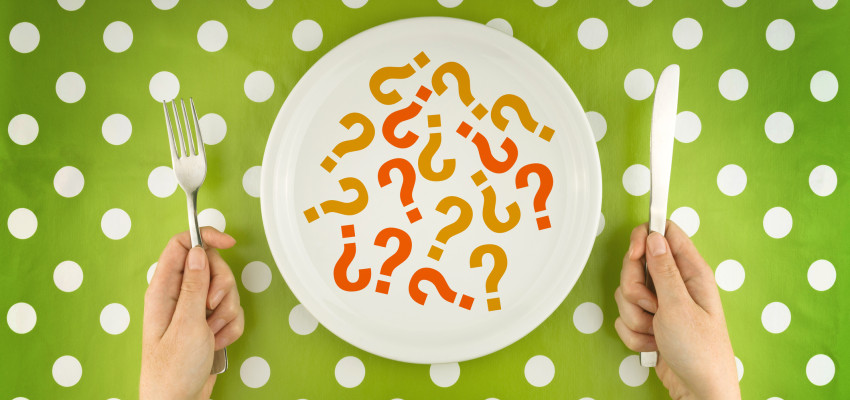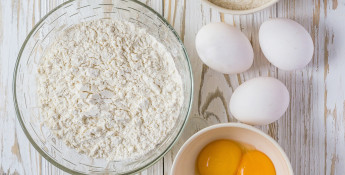By Dixie Vogel on January 2, 2018
How to eat healthy
It's not a one-size fits all

These days, I consider it nothing short of a minor miracle when people manage to find food they feel comfortable eating.
To be smart and virtuous eaters according to what we’re told, our food must meet a near-impossible array of requirements, it seems. Healthy, organic, local, gluten free, non-GMO, antibiotic free, cruelty free, free range, grass fed, all natural, no hormones, pesticide free, honeybee friendly, sustainably produced…and don’t forget the carbon footprint of the food processing. Because don’t you care about the planet?
No pressure or anything.
Except that’s not even the whole enchilada. Layered right atop this mountain of must-haves are personal needs. Health issues or want to avoid them? Better watch what you eat. Foods must be exactly the right mix of calories, carbs, vitamins, fats, sugars or whatever. Good luck figuring out that magic formula.
And then we’ve got living-in-the-real-world concerns like cost, time to shop and prepare and—heaven help us—taste. We still get to care about taste, right?
Understanding the information
We may try to investigate food controversies, but if we don’t completely understand the issues discussed, it doesn’t take long to feel like we’re in over our heads. So, we’re down to deciding credibility based on what “sounds good.” Sound bites and science don’t always sync.
Or perhaps we turn to popular opinion. If we don’t have the wherewithal to figure it all out, maybe asking what most people think will help. But popular wisdom isn’t always so wise. (Take that flat Earth thing.) Honestly though, I’m not super interested in utilizing popular opinion this way. I’m far more invested in what I find specifically best for me than what most people think is best in general.
So how’s an ordinary person supposed to slog through this vast sea of heavily conflicting claims about the best way to eat? Most of us are not in the position to acquire a PhD (or three) to feel fully qualified to make dinner.
The “Food Guru”
Looking for shortcuts in this scenario becomes nothing short of survival. We seek information that appears trustworthy, delivered in a way that makes sense. And when we do find someone who fits the bill and appears to know what they are talking about, that is how “Food Gurus” are born.
I attended a food panel discussion not long ago. There were a whole bunch of bona fide Food Gurus, gathered to chat about food and take questions.
So, you’d think I’d be walking out of that door with solid answers about the best way to eat.
Not exactly.
What I heard struck me mostly as a mishmash of values, beliefs and approaches—not necessarily compatible with one another, let alone with my own. Of course, that makes total sense. Different people will approach issues in different ways. There’s strength in diversity without question, but when you’re talking diversity of advice on something so basic as the food we eat? Makes a darned tough roadmap to follow.
Nonetheless, I did leave that event with one fresh conclusion firmly entrenched in my psyche: if I tried to style my eating after what I gleaned from a combination of popular opinion and advice from a random assemblage of food gurus—often more or less what happens out there in the real world—well, my head might just explode.
I understand how folks could become confused or even frightened about food. We want to know we’re doing the best we can, for ourselves and loved ones. But “the best” is a ludicrously ambiguous target with so many competing voices preaching incompatible versions of what that best looks like. Discerning righteous eating fact from fiction (even unintentional fiction) is a daunting task.
Pondering this is leading me to one, inescapable conclusion: nobody else can be my Food Guru. They just can’t.
No matter how well-intentioned and no matter how knowledgeable, nobody else is me. Nobody else lives in my skin. Nobody else must make peace with the decisions I make about what I put in my body. Nobody else is feeding my family. Nobody else has my exact mix of needs and values and priorities when it comes to food (or anything else).
Also? Nobody else gets to tell me what I can and cannot eat. I’m a grownup, dang it.
So, if I’m going to have myself a Food Guru, it’s gotta be a do-it-yourself project. I will have to become my very own Food Guru. But that’s OK. Nobody else is better suited to know what matters most to me.
And I am clear on what’s most important to me. I want to feel good about the food I eat, physically and emotionally. I want to feel good about what I feed to the people I love. I want to know I’m choosing food that’s safe and healthy and yes, delicious. Feeding people is an act of love and expressing love should feel good.
In keeping with those priorities, it’s important to acknowledge that where I am right now is fine. I do the best I can always, and my best is always enough. However, wherever I am, I can always learn more. Undertaken in that spirit, learning is a joyful adventure and that’s always what I’m shooting for.
Going straight to the source
I’m interested in gathering information from a variety of well-informed sources, directly. Details get distorted as they travel, and biases are easily introduced, consciously or not. So, I want to talk to folks involved with the process of producing our food – farmers and ranchers – and learn about the decisions they make and why they make them. Instead of seeking prepackaged conclusions, I’ll be looking for facts to further my own understanding of the issues involved to arrive at informed conclusions. That’s not a bad way to approach anything in life, for that matter.
And maybe my journey to become my own Food Guru can provide ideas, insights or inspiration to help you find become your own Food Guru in the process? I hope so. I’d like that a lot.
Either way, I am looking to this journey of mine to bring you something of interest and value when you’re making personal decisions about food. Stay tuned and please hitchhike along. It’s going to be fun.
May you always feel good about the food you eat.





